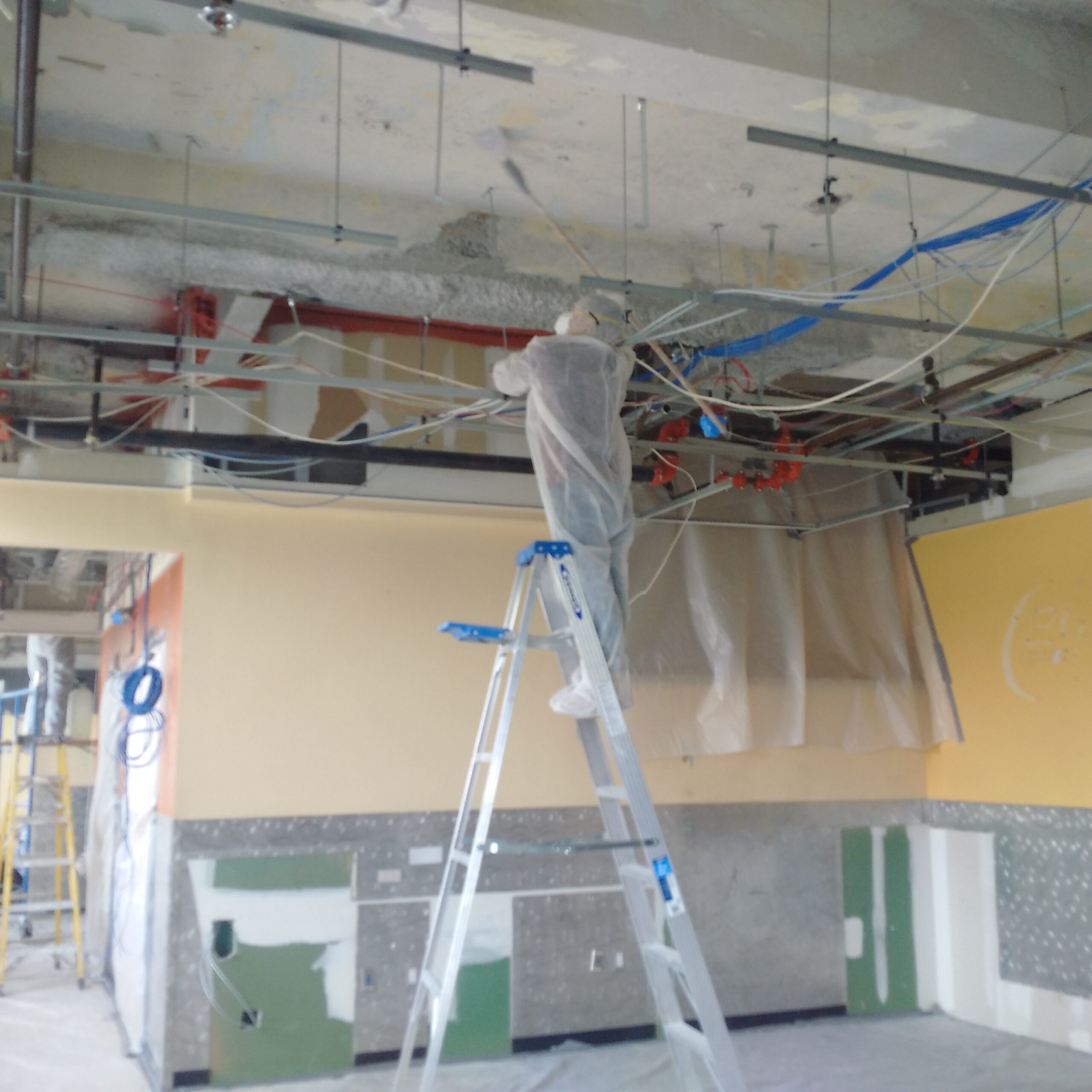Comprehensive Lead Paint Removal Service in NYC-- Certified and Certified
Comprehensive Lead Paint Removal Service in NYC-- Certified and Certified
Blog Article
Ideal Practices for Ensuring Safe and Detailed Lead Violation Reduction
Dealing with lead violation abatement requires a multi-faceted strategy to make certain both safety and security and conformity. It's the last clearance process, involving thorough inspections and research laboratory screening, that genuinely verifies a lead-free environment, ensuring lasting security. Exactly how do these practices adjoin to ensure extensive lead abatement?

First Evaluation
Conducting a first evaluation is a vital initial step in lead infraction abatement. This stage encompasses a thorough examination of the residential property to identify the visibility, extent, and details places of lead-based threats. Qualified specialists, such as licensed lead inspectors or run the risk of assessors, should do a comprehensive website inspection, using devices like X-ray fluorescence (XRF) analyzers to precisely detect and gauge lead concentrations in paint, dirt, soil, and water.
The evaluation has to also consist of a review of the building's background, previous records, and any complaints or wellness issues reported by owners - Lead Removal Contractors. Documenting the searchings for thoroughly is crucial, as these documents develop the basis for establishing an effective reduction strategy. A thorough evaluation also entails tasting and research laboratory analysis, which are critical to verify the existence of lead and guide subsequent actions
In addition, it is vital to connect the outcomes transparently to all stakeholders, consisting of home owners, occupants, and governing authorities. By ensuring that the initial assessment is conducted with precision and rigor, experts can lay a solid foundation for a targeted and effective lead reduction procedure, eventually securing public wellness and making certain conformity with governing criteria.
Appropriate Control
Appropriate containment is important to stop the spread of lead pollutants during abatement activities. Effectively managing control decreases the threat of lead dirt and debris migrating to non-work areas, thereby guarding both the setting and people outside the instant work area. To attain correct control, an airtight obstacle of plastic bed linen need to be established around the workplace, making sure all seams and edges are firmly sealed. Lead Removal Contractors. This barrier needs to prolong from floor to ceiling and be taped to stop any type of leaks.

Routine inspections of the control location are needed to check for violations or weak points in the barrier. Any kind of determined concerns ought to be without delay dealt with to keep the integrity of the control. By sticking to these methods, reduction projects can successfully control lead contamination and alleviate find associated health and wellness threats.
Worker Security
Ensuring worker defense is paramount during lead reduction tasks to stop job-related exposure to dangerous lead fragments. Important procedures consist of using personal protective tools (PPE) such as respirators, gloves, and full-body fits particularly created to block lead dust and fumes. Workers must undertake thorough training on the correct usage and upkeep of PPE, including healthy testing for respirators to make certain maximum effectiveness.
Design controls, such as local exhaust ventilation systems, are vital in reducing air-borne lead focus in the job setting. Management controls should also be executed, including limiting the duration of exposure and rotating workers to decrease individual exposure times. Regular medical surveillance and biological monitoring are essential for early detection of lead absorption, view enabling prompt treatment and therapy.
Moreover, developing a decontamination procedure is important. Workers should follow stringent purification treatments before breaks and at the end of their shift to avoid lead dust from being lugged outside the workspace. This includes comprehensive hand and face washing with lead-specific cleansing representatives and altering out of contaminated apparel.
Thorough Clean-up
Preserving a safe workplace extends past employee protection and incorporates careful clean-up to ensure lead fragments are completely removed from the website. The process of meticulous cleaning is important in avoiding the recontamination of the abated location and protecting both existing and future passengers.
To achieve a thorough clean-up, all job areas have to be systematically sanitized. This includes making use of specialized HEPA (High-Efficiency Particulate Air) vacuum cleansers and wet-wiping techniques to record and remove great lead dust that may have decided on surfaces. It is vital to cleanse all horizontal surface areas, including floors, home window sills, and countertops, in addition to upright surfaces that might have entraped lead bits.
Employees must use ideal personal protective tools (PPE) throughout cleanup to prevent direct exposure to residual lead dust. Utilized cleansing materials such as wipes, sponges, and mop heads must be dealt with based on unsafe waste disposal policies.

Last Clearance
Final clearance is the essential wrapping up phase of lead abatement that establishes whether the site is secure for reoccupation. This critical action entails thorough inspection and testing to validate that all lead risks have been effectively gotten rid of.

Last clearance testing not only shields future passengers but also makes certain compliance with local, state, and government policies. Furthermore, it functions as a recorded validation of the reduction professional's adherence to sector finest practices. Guaranteeing a thorough and effective final clearance is necessary in protecting public wellness and promoting trust fund in the abatement procedure.
Conclusion
Making certain safe and detailed lead infraction reduction requires a complex blog here method incorporating initial evaluations with innovative detection techniques, reliable containment methods, stringent worker defense protocols, and precise cleaning treatments. The final clearance phase, including detailed evaluations and research laboratory screening, is essential to verify conformity with EPA standards. Adherence to these best methods assures a secure environment for residents, alleviates wellness risks, and supports regulative demands, therefore advertising public health and safety in lead-affected areas.
Report this page